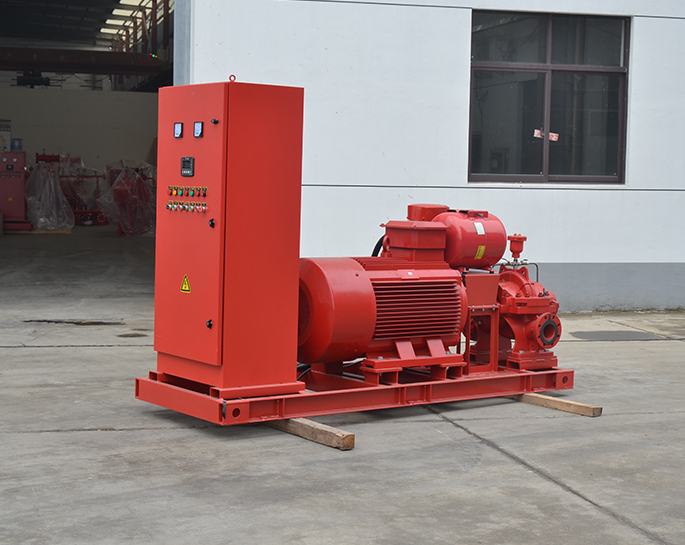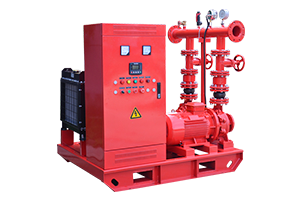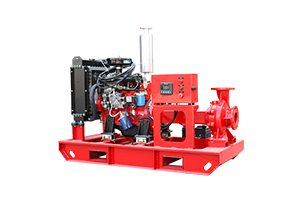How do I ensure my electric fire pump is compliant with safety standards?
May 27, 2024
Share:
Ensuring your electric fire pump is compliant with safety standards involves several steps, including adhering to regulatory requirements, following best practices for installation and maintenance, and conducting regular inspections and tests. Here are detailed steps to guide you:
1. **Understand Relevant Standards and Codes:**
- **NFPA 20:** The National Fire Protection Association (NFPA) standard for the installation of stationary pumps for fire protection. Ensure your fire pump system complies with the requirements of NFPA 20.
- **Local and National Codes:** Compliance with local fire codes and regulations, as well as national standards such as those from Underwriters Laboratories (UL) and Factory Mutual (FM).
2. **Proper Installation:**
- **Qualified Professionals:** Ensure the installation is carried out by certified and experienced professionals who are familiar with NFPA 20 and other relevant standards.
- **Manufacturer Guidelines:** Follow the manufacturer's installation instructions closely.
- **Location and Accessibility:** The pump should be installed in a location that is easily accessible for maintenance and operation, with sufficient clearance around it.
3. **Electrical Compliance:**
- **NFPA 70 (NEC):** Ensure the electrical components of the fire pump system comply with the National Electrical Code (NEC), particularly NFPA 70.
- **Proper Wiring:** Use proper wiring methods, circuit protection, and grounding as specified in the NEC.
4. **Commissioning and Testing:**
- **Initial Testing:** Conduct initial acceptance testing to ensure the system operates correctly under all expected conditions.
- **Regular Testing:** Implement a schedule for regular testing and maintenance as outlined in NFPA 25 (Standard for the Inspection, Testing, and Maintenance of Water-Based Fire Protection Systems).
- **Flow and Pressure Tests:** Regularly perform flow and pressure tests to verify the pump meets required performance criteria.
5. **Maintenance and Inspection:**
- **Routine Inspections:** Conduct routine inspections of the pump, control equipment, and related components.
- **Preventive Maintenance:** Follow a preventive maintenance schedule, including lubrication, alignment checks, and motor servicing.
- **Record Keeping:** Maintain detailed records of all inspections, tests, maintenance, and repairs.
6. **Training:**
- **Operator Training:** Ensure that personnel responsible for operating and maintaining the fire pump are properly trained.
- **Emergency Procedures:** Develop and train staff on emergency procedures in case of fire or pump failure.
7. **Compliance Documentation:**
- **Documentation:** Keep all installation, maintenance, and testing documentation organized and readily available for review by authorities having jurisdiction (AHJs).
- **Third-Party Inspections:** Consider having third-party inspections to validate compliance with applicable standards.
8. **System Integration:**
- **Compatibility:** Ensure the fire pump system is integrated seamlessly with the building’s overall fire protection system, including alarms and sprinklers.
- **Monitoring:** Implement a monitoring system to alert maintenance personnel of any issues or failures.
By following these steps, you can ensure your electric fire pump system remains compliant with safety standards and is ready to perform effectively in the event of a fire.

1. **Understand Relevant Standards and Codes:**
- **NFPA 20:** The National Fire Protection Association (NFPA) standard for the installation of stationary pumps for fire protection. Ensure your fire pump system complies with the requirements of NFPA 20.
- **Local and National Codes:** Compliance with local fire codes and regulations, as well as national standards such as those from Underwriters Laboratories (UL) and Factory Mutual (FM).
2. **Proper Installation:**
- **Qualified Professionals:** Ensure the installation is carried out by certified and experienced professionals who are familiar with NFPA 20 and other relevant standards.
- **Manufacturer Guidelines:** Follow the manufacturer's installation instructions closely.
- **Location and Accessibility:** The pump should be installed in a location that is easily accessible for maintenance and operation, with sufficient clearance around it.
3. **Electrical Compliance:**
- **NFPA 70 (NEC):** Ensure the electrical components of the fire pump system comply with the National Electrical Code (NEC), particularly NFPA 70.
- **Proper Wiring:** Use proper wiring methods, circuit protection, and grounding as specified in the NEC.
4. **Commissioning and Testing:**
- **Initial Testing:** Conduct initial acceptance testing to ensure the system operates correctly under all expected conditions.
- **Regular Testing:** Implement a schedule for regular testing and maintenance as outlined in NFPA 25 (Standard for the Inspection, Testing, and Maintenance of Water-Based Fire Protection Systems).
- **Flow and Pressure Tests:** Regularly perform flow and pressure tests to verify the pump meets required performance criteria.
5. **Maintenance and Inspection:**
- **Routine Inspections:** Conduct routine inspections of the pump, control equipment, and related components.
- **Preventive Maintenance:** Follow a preventive maintenance schedule, including lubrication, alignment checks, and motor servicing.
- **Record Keeping:** Maintain detailed records of all inspections, tests, maintenance, and repairs.
6. **Training:**
- **Operator Training:** Ensure that personnel responsible for operating and maintaining the fire pump are properly trained.
- **Emergency Procedures:** Develop and train staff on emergency procedures in case of fire or pump failure.
7. **Compliance Documentation:**
- **Documentation:** Keep all installation, maintenance, and testing documentation organized and readily available for review by authorities having jurisdiction (AHJs).
- **Third-Party Inspections:** Consider having third-party inspections to validate compliance with applicable standards.
8. **System Integration:**
- **Compatibility:** Ensure the fire pump system is integrated seamlessly with the building’s overall fire protection system, including alarms and sprinklers.
- **Monitoring:** Implement a monitoring system to alert maintenance personnel of any issues or failures.
By following these steps, you can ensure your electric fire pump system remains compliant with safety standards and is ready to perform effectively in the event of a fire.







